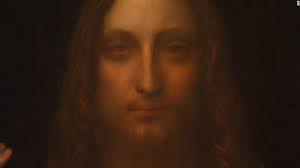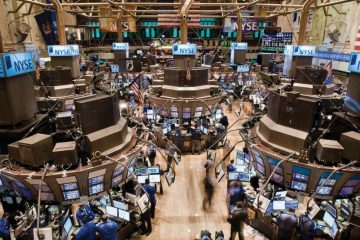The right way to add art to your investment portfolio

Art has become an asset class for more investors as the value of the market has grown.
The highest end of the market has become a space for billionaires to face off. Recent records were set at Christie’s in 2015 when “Les femmes d’Alger,” painted in 1955 by Pablo Picasso, sold for $ 179.4 million, and “Reclining Nude,” a century-old portrait by Amedeo Modigliani, sold for $ 170.4 million.
And, of course, there was last year’s sale of “Salvator Mundi,” a 600-year-old painting by Leonardo da Vinci, for $ 450 million that was the most expensive painting ever sold at auction.
But the bulk of the tradeable art market is in works that sell for $ 1 million to $ 5 million to buyers hoping the pieces will hold value and eventually grow as investments.
David Schrader, head of private sales for contemporary art at Sotheby’s, says the first steps to investing in art are remarkably simple. “The first questions I ask a client are, What do you like? And then, what’s your budget?”
Related: Can you invest responsibly and make money, too?
As with other asset classes, your investment depends on your sensitivity to risk.
“There are a lot of different ways to collect and invest in art,” says Schrader. “There are safer blue-chip artists. And there are more speculative younger artists.”
But preferences are important.
“Because of the subjectivity and lack of liquidity,” says Schrader, “you have to buy something you love and that you can live with. But it is possible to have the best of both worlds: a beautiful piece that also appreciates and is a store of wealth.”
Find the momentum
As with any investment, start by doing your research. “Go to museum shows, because they are outpacing the market,” says Erica Samuels of Samuels Creative & Co., an independent art adviser. “You need to take the time to read, research and look around.”
Take note of artists with momentum, says Samuels. Look at those that have museum retrospectives, who have broad institutional support, world-wide gallery support, who are being acknowledged with awards. Momentum can propel value.
“Buy the drawing, enjoy it, let its value change,” says Samuels. “Then trade up.”
Look beyond paint on canvas
Another way to find value is to look at drawings by established blue-chip artists.
“There are some artists who are very expensive but their drawings are much less,” says Samuels, noting the contemporary artist Sam Francis. “He has paintings that sell for millions, but the drawings are still in the $ 200,000 to $ 500,000 range. But the works on paper are equally as interesting.”
Samuels says there can be a powerful gap between the cost of canvases by market favorites like Jean-Michel Basquiat, George Condo and Cy Twombly and their drawings.
“The disparity between paper and canvas is big,” says Samuels. “I get it. People always want the canvas. But often the artist is doing the same things on paper.”
Seek out diverse artists
Another place to find upside in the art market is to look at the work of diverse artists, whose work can sometimes be undervalued, according to Samuels.
Samuels notes Joan Mitchell, an abstract expressionist, as an example.
“Being a female artist she has lagged the guys in prices,” says Samuels. “But her market has totally shifted. In the last round of sales in May her work did really well. She’s gone to the next level, and there is still room.”
Mitchell’s work was selling in the $ 3 to $ 5 million range, says Samuels, but in May, Christie’s sold a painting called “Blueberry” for more than $ 16 million.
“Why couldn’t she go to $ 20 million?”
Make a plan
Like any type of investment, you need to have a short-term and long-term plan, and don’t make any hasty or emotional decisions.
“I don’t want them to waste their money,” says Samuels. “I don’t believe in buying art on a whim.”
Key to developing a successful plan is to get help.
“If you want to invest at a particular level, say, half a million plus or $ 250,000 to start, you need to work with a professional adviser,” says Samuels.
Some private art-advisers act as a broker, identifying pieces that individuals would like to sell and matching them with a buyer. Other advisers are strictly buy-side, helping investors navigate the art market.
Advisers can also keep you out of trouble — like stop you from buying a work after only seeing a j-peg. “You really have to stand in front of the piece,” says Samuels.

